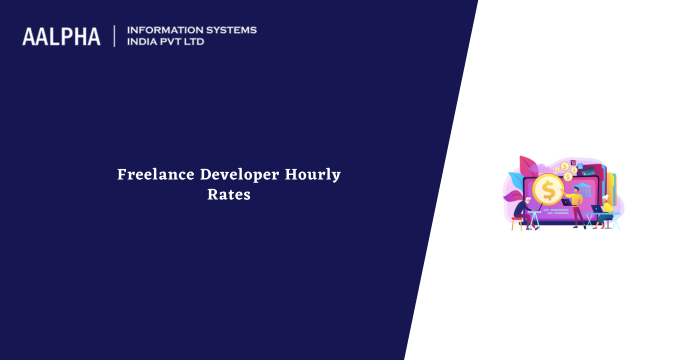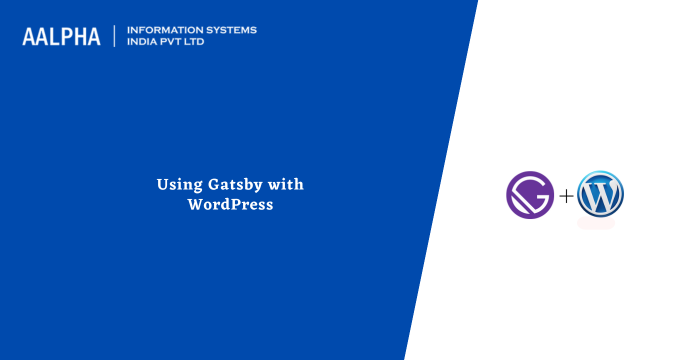Getting work done is among the most significant hurdles every professional will experience. However, everything comes with a price, and so does freelancer developers reap from their work. Developers are among the experts whose work is professional enough to go with a little higher rate at fixed or hourly rates. If you need to venture into the development field, it is essential to have a deep understanding of what development entails and the rates associated with it. It is for this reason that we’re going to explore the key details involving developer pay deeply. However, with increased technology, we’ve seen many professionals going remote to dispense their profession right from anywhere. Therefore, many people are adopting this approach to working remotely including developers. Our exploration in this piece will majorly touch on the freelancer developer’s hourly rate.
With freelance development, it is always essential to be flexible, especially when estimating the actual price of developing a website, software, or any other product related to development. However, it would help if you had a foundation price that you can’t go lower. The website development cost might differ since web designers, clients, and projects differ. Therefore, the developer rates might vary depending on the web designer, the project and its scope, and the client, among other vital considerations.
It is, therefore, essential to factor in a wide range of elements and considerations when setting your freelance developer hourly rate. It is, therefore, vital that you don’t take the costs lightly by going for a simple answer. Without proper determination and estimation, you might be quoting too low for projects that demand much. In estimating the actual development prices, you will most likely charge an extra cost or even a lower cost – all these are because establishing the proper rates comes from trial and error. Let’s dive deeper into understanding the pricing for development projects when you are a freelance developer.
Establishing the correct development prices and developer hourly rates comes with doing a wide range of projects. At first, setting the correct prices for projects might be challenging since you might need more experience estimating the workloads and skillset involved in specific projects and the rightful prices. Gaining experience in web development will give better sense in understanding the correct charges for given projects.
How to Avoid Freelance Work Pitfalls
When developing applications or websites, it is essential to understand that pitfalls occur during development. Even establishing prices for given projects comes with its set of pitfalls, including lower rates or higher budgets. However, to avoid many of the pitfalls of freelance development and its costs, it is essential to properly understand the scope of work, the rate, or the client’s budget, among others.
Let’s understand the Pitfalls that come with the scope and client budget.
-
The scope of work
The scope of the development project is an essential determiner that will help you fix a proper hourly rate with which you can work remotely without straining. Usually, pitfalls occur when you need an appropriate scope for the project. As a freelance developer, you should ensure that the client gives you the full scope of the project. Understanding the full scope of the project gives you complete control and understanding of the final price for the entire project. With an initial understanding of the scope of the web project, you can adequately estimate the workload and thus establish the actual hourly rate for the entire work.
-
Client budget
The client budget is among the critical considerations before you start any development project. It is essential to look deeply into the client’s budget for the postulated project. Refrain from if the client understands the actual prices for the project, as some clients may have limited funds based on the assumption of avoiding getting to ensure that you don’t become involved in other external strives. Usually, it is essential to source advice from other developers regarding the development projects you are working on. Sourcing external advice ensures setting the proper rates while ensuring each engagement leads to a successful development phase.
It is also essential to avoid pricing clients in a similar case as work-for-hire sites. Mostly, work-for-hire sites come with their prices and are based on specific criteria. Therefore, you should only copy the rates directly if you explore the scope of work and the complexities involved in the development phase. Consequently, you must set proper hourly rates based on the job or project involved rather than exploring and copying the rates in most work-for-hire sites.
Clients with minimal budgets for handling development projects are not worth your time and, therefore, the need to dedicate much time to clients ready to offer the correct pricing for any freelance development roles. However, that doesn’t necessarily mean that checking out the hourly rates on work-for-hire websites is wrong. It is essential to check the freelancer developer rates on most such sites, which will help you establish and set the prices.
One important thing you need to understand in the entire phase of exploring the rates in work-for-hire sites is that you should be reasonable, like most freelance developers offering their freelance development services on most work-for-hire platforms.
-
Understanding the globality of freelance development pricing
It is essential to understand that web development is one of the critical fields that has shown significant growth, especially with the extension and expansion of technology. The globality and popularity of web development are thus essential and straightforward in most work-for-hire platforms, which are flooded with so many clients demanding their work done. In the past years, experts always set their development rates based on what other developers charged and depending on the location they are residing.
With the invention and implementation of work-from-anywhere sites, we’ve seen most sites providing a proper platform where freelance developers can leverage and work for clients remotely at their set prices. It is, therefore, essential to understand that with such sites, you can work almost from anywhere worldwide after you’ve secured a web development project and clients who offer project funds at a set budget. It is, therefore, essential to understand your skill set level so that you can adequately set your hourly ratings for each remote web development job you encounter.
You must also have a deeper understanding of what you do and, therefore, pitch clients and projects from areas with higher rates on every development project. There are a lot of jobs online where you can get clients from critical regions that offer the top-notch web development services – it is, therefore, essential to set your nets well on the online job platforms for a better catch.
It is essential to note that setting the best rates in the global space requires an international calibre, as there is greater competition, especially with the increased number of freelance developers. Understanding the clear line between the local and global markets is also essential. You cannot charge the same rates you charge for projects locally and worldwide. An international space needs to set your rates slightly higher as you will interact with your clients on a bigger stage. Therefore, it is essential to avoid setting the rates too low by adopting the prices you use on a local stage or the local market.
As a freelance developer, it is essential to understand the approaches to use to charge your clients for remote web development work. There are common ways or structures with which developers can charge for the work they offer. The key ways in which developers charge include the hourly rate, per-project rate, and retainer rate. Let’s explore a deeper overview of the different ways to charge clients.
Different ways to charge for freelance development work
Let’s dive into a small overview of how freelance developers charge their clients for projects they handle. It is essential to understand that the three rate-charging approaches rely on each other. When starting your freelance development journey, you can start with a solid hourly rate that’s good for things you master correctly and doesn’t take quite a long time to handle. Therefore, the hourly rate is appropriate for projects that take a little time rather than those that consume several months ahead. Some freelance developers might opt for payment through a per-project rate, which is entirely based on the timeframe taken to complete the project.
On the other hand, the retainer rate is a charge rate based on what you quote to allocate a certain amount of time to a client monthly. It is essential to understand that each payment approach also comes with its set of perks and disadvantages. Therefore, it is essential to look deeper into each of them, know the suitability of each for a project, and establish the best that suits the demands of your project.
Each rate has perks and disadvantages, but project and retainer rates are less than the developer’s flat hourly rate. Projects and retainers are guaranteed income rates you can count on—you can afford to few charges because of the inflow of funds. Sometimes, establishing the amount to charge isn’t as crucial as establishing project costs.
-
Per hour rate
The payment per-hour rate for freelance developers comes with perks. However, if you need to be more careful, the rate can be a pitfall for you as a freelancer developer. Without proper consideration and exploration of the project scope, the per-hour rate may come as a sticker shock. For instance, you might agree with a client over a project. However, you might discover later that you should have quoted your hourly rate and, therefore, end up doing loads of work at a peanut pay. Thus, when setting your per-hour rate, it is essential to ensure that you delve deep and understand the full scope of the project. If you assume the amount of work, you might be doing extra work at an unreliable fee. It is essential always to avoid sticker shocks that come with establishing the hourly rates. It is, therefore, necessary to ensure that you also update your clients about the hours spent on the project, even if the project’s scope is greater than the postulated one. With sticker shocks comes a poor relationship between the freelancer developer and the client. Sometimes, if things don’t go as planned for hourly rates, you must agree with your client and ensure that you switch to a flat rate for the project’s entire cost. However, you will have to share some of the risks involved in the project.
-
Per Project pricing model
If things don’t go well for the per-hour model, you can always try the per-project pricing model. The per-project pricing model comes with more excellent perks, such as avoidance of disappointments at the end of the project. Per per-project pricing model works in a way that allows the freelance developer to put most of the billing risks involved in the entire project on the client. In this model, the freelance developer must ensure that the client has a rough idea of the pricing of the whole project, but the price won’t be the actual one until the completion of the entire project. It is also essential to understand the risk cost-sharing potentials available with the implementation of this pricing model. Therefore, the freelance developer must assess the entire project to establish the amount of work involved, including any other necessary activities, before setting an estimated price for the whole thing.
Usually, the best way to determine project-based pricing is to assess the project and establish how long the project will take without necessarily working on something else. It is then that you can calculate everything based on an hourly rate. Even though the cost might seem so huge to scare away a client, it is essential that consider a slight discount, which can help cater to shared risks.
-
Retainer rate pricing model
With the retainer pricing model comes a unique interaction between freelance developers and their clients. The model allows the freelance developer to allocate some specific hours to the client for a lower rate, mostly less than the developer’s hourly rate. The retainer rate pricing model is one of the best and comes with perks especially on the client side. Clients who benefit a lot are those with web design and web development projects. They can agree to work with freelance developers on projects in parallel over a given period. For instance, the freelance developer may opt to work on part of one project in a given month and shift to the next in the succeeding months. The retainers hourly rate pricing model allows for developers to make newer quotes in case there is a need for extra hours or generally time to complete the entire project.
-
Special rates for unique circumstances
Sometimes, projects come with many things, so there is a need to consider the need for unique or special rates. It is a rate with which clients can do away with all they are doing and explore urgent work needed by a given client. Setting the special rates, a little higher than your usual rates is essential as you’re leaving other crucial projects to handle the urgent project your client needs. When on special rates, it is necessary to ensure considerations such as project scope expansion, project delays, and additional changes that might come outside the already set agreement, among other significant considerations.
-
Hourly rates to charge as a freelance developer
Setting up your hourly rate as a freelance developer can be daunting, especially if this is your first time. Usually, the hourly rates for freelance developers vary depending on their experience levels and the kind of project they are working on. However, there are standard rates for freelance developers. Usually, a few freelancers work for 37.5 hours a week. But freelance developers are their own bosses, so they set the hours they choose to work in a week. Averagely, the standard charges for freelance developer hourly rates lie in the range of $50, $150, or even $200 or more per hour.
Conclusion
Freelance developer hourly rate may vary from developer to developer. However, there are critical considerations when setting up your freelance developer hourly rate. We hope this helps you choose the best hourly rate for every work done.
Back to You!
Looking for the best pricing for your development requirements? Get in touch with us today!






Share This Article:
Written by:
Stuti Dhruv
Stuti Dhruv is a Senior Consultant at Aalpha Information Systems, specializing in pre-sales and advising clients on the latest technology trends. With years of experience in the IT industry, she helps businesses harness the power of technology for growth and success.
Stuti Dhruv is a Senior Consultant at Aalpha Information Systems, specializing in pre-sales and advising clients on the latest technology trends. With years of experience in the IT industry, she helps businesses harness the power of technology for growth and success.